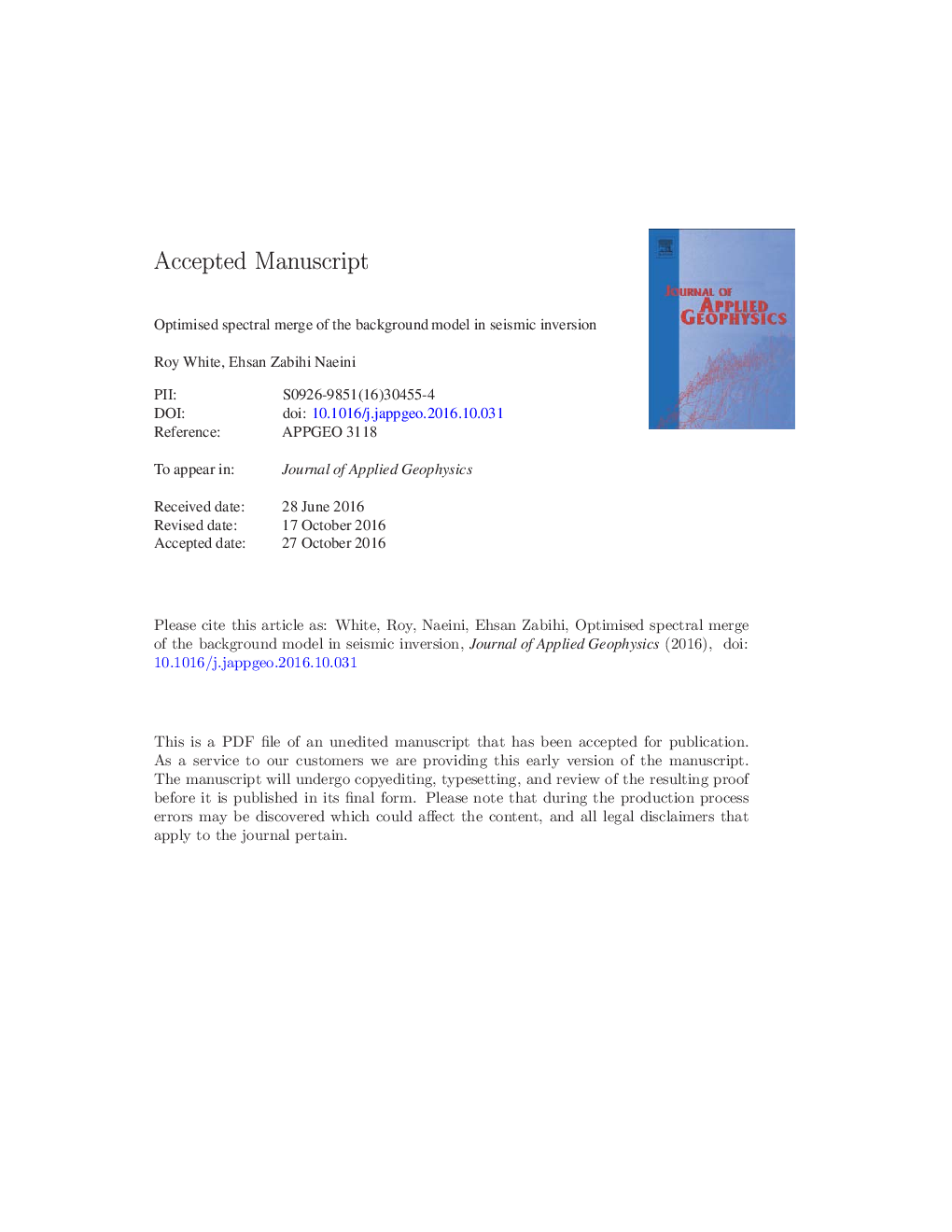| Article ID | Journal | Published Year | Pages | File Type |
|---|---|---|---|---|
| 8915590 | Journal of Applied Geophysics | 2017 | 41 Pages |
Abstract
It is difficult to predict the low-frequency content of inverted seismic data. These low frequencies are affected by the uncertainties in (1) measuring the low-frequency response of the seismic wavelet and (2) knowing how inversion protects the signal-to-noise ratio at low frequencies. Uncertainty (1) becomes acute for broadband seismic data; the low-frequency phase is especially difficult to estimate. Moreover we show that a mismatch of low-frequency phase is a serious source of inversion artefacts. We also show that relative impedance can estimate the low-frequency phase where a well tie cannot. Consequently we include a low-frequency phase shift, applied to the seismic relative impedances, in the search for the best spectral merge. The background models are specified by a low-cut corner frequency and the phase shifts by a phase intercept at zero frequency. A scan of the misfit between the well-log and seismic relative impedances as a function of corner frequency and phase intercept then reveals the most consistent combination of the background and relative impedances. The method is illustrated by application to a synthetic example and a broad-band data set.
Related Topics
Physical Sciences and Engineering
Earth and Planetary Sciences
Geophysics
Authors
Roy White, Ehsan Zabihi Naeini,
